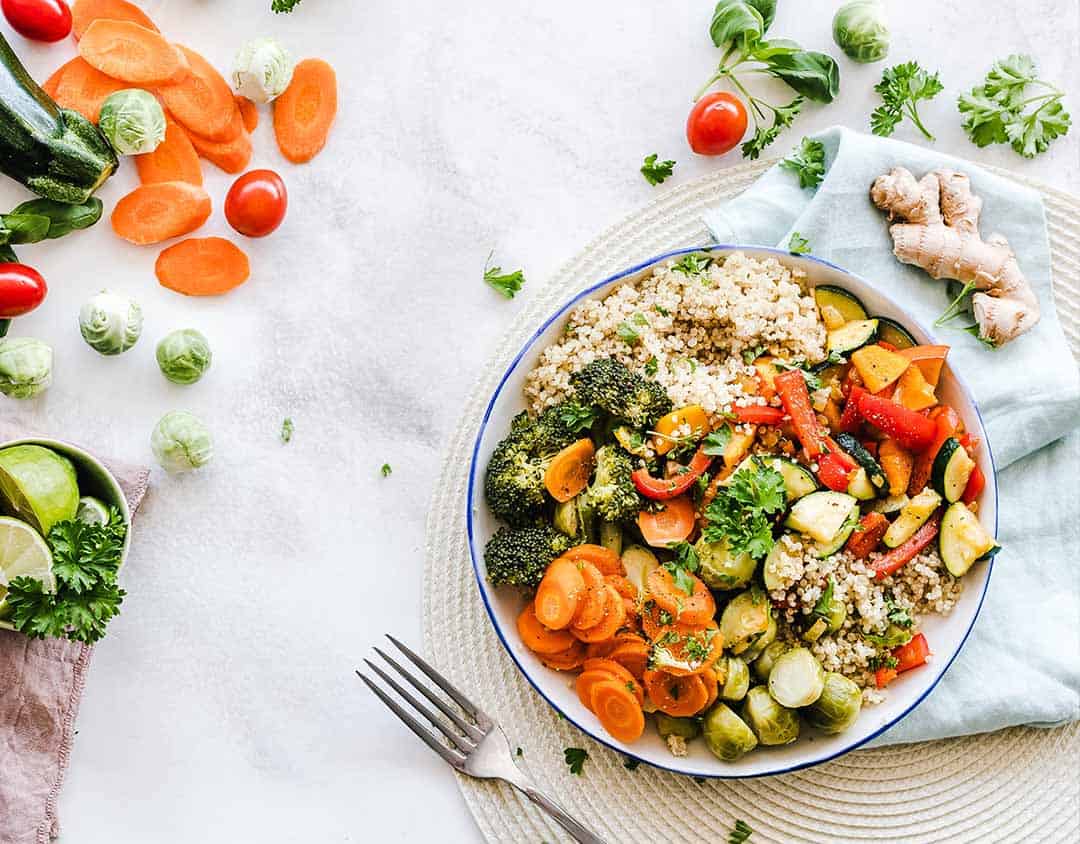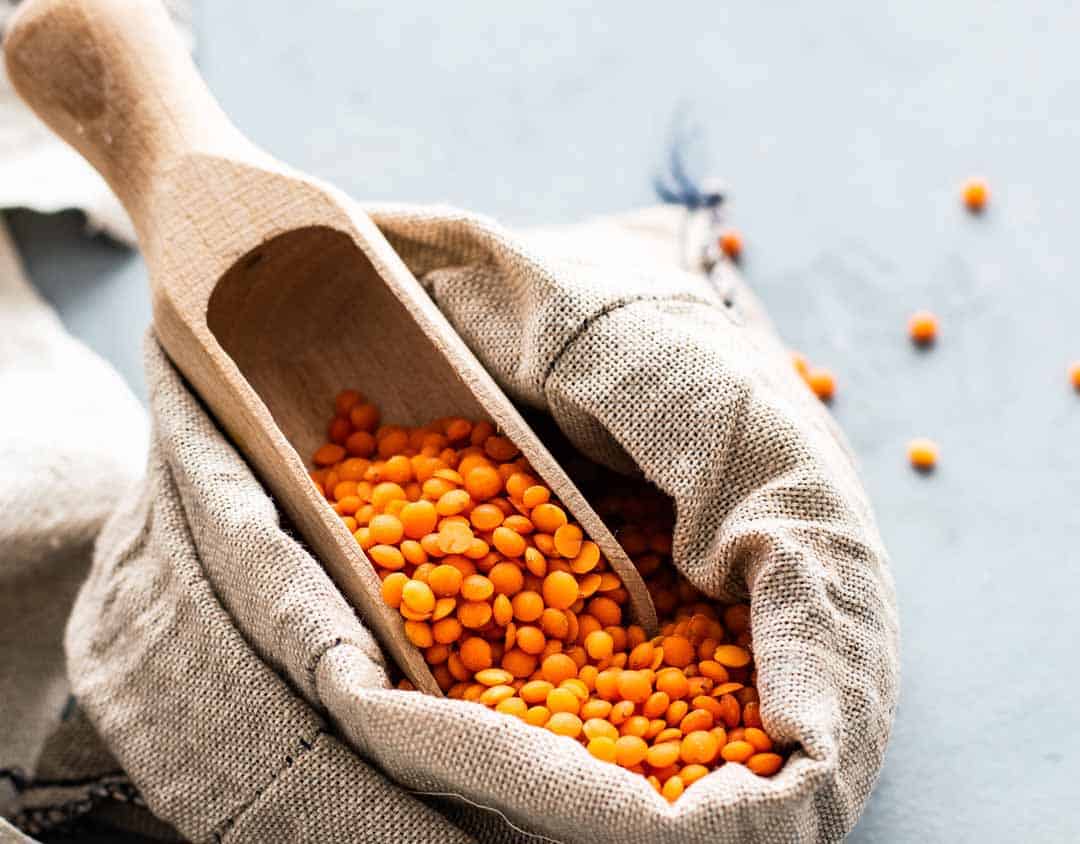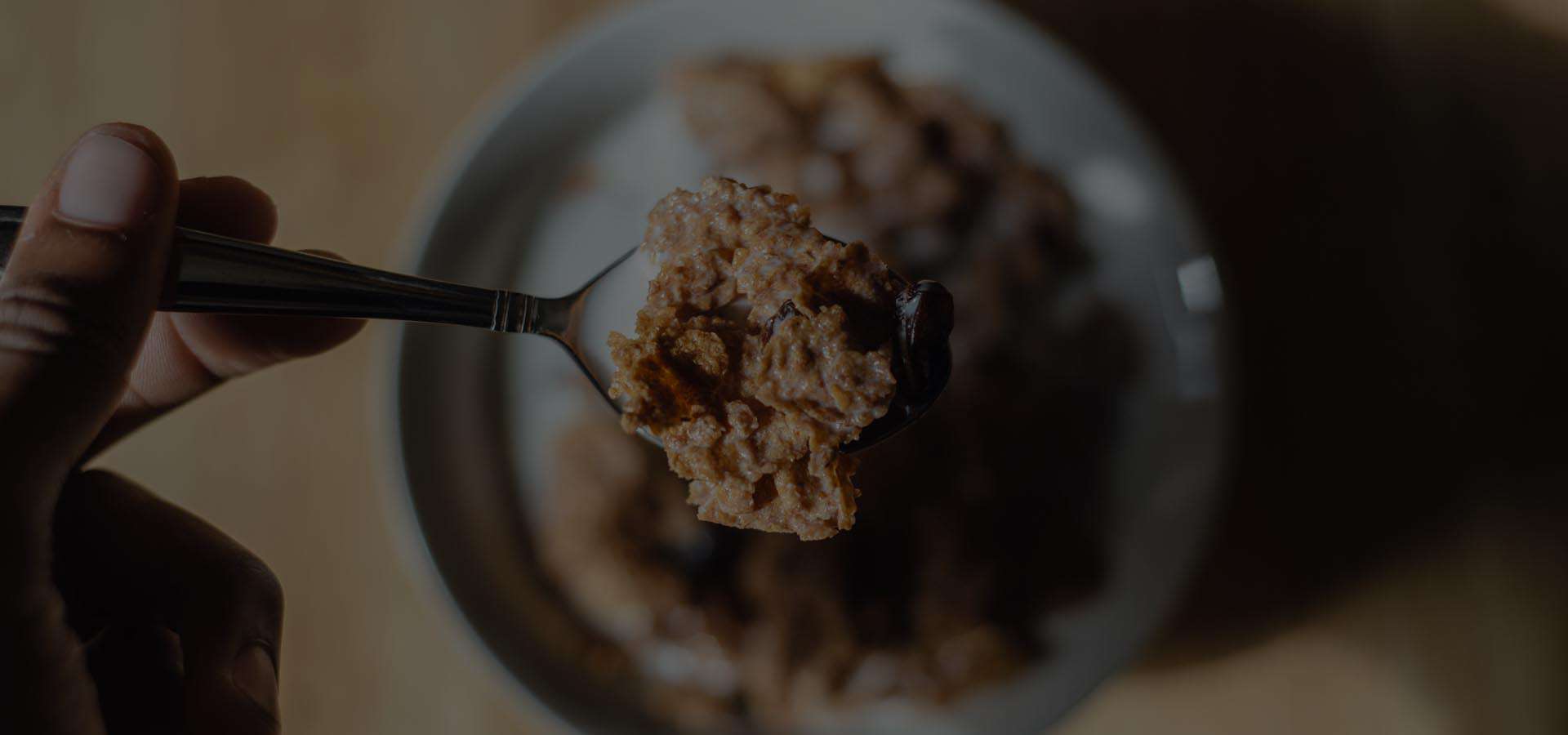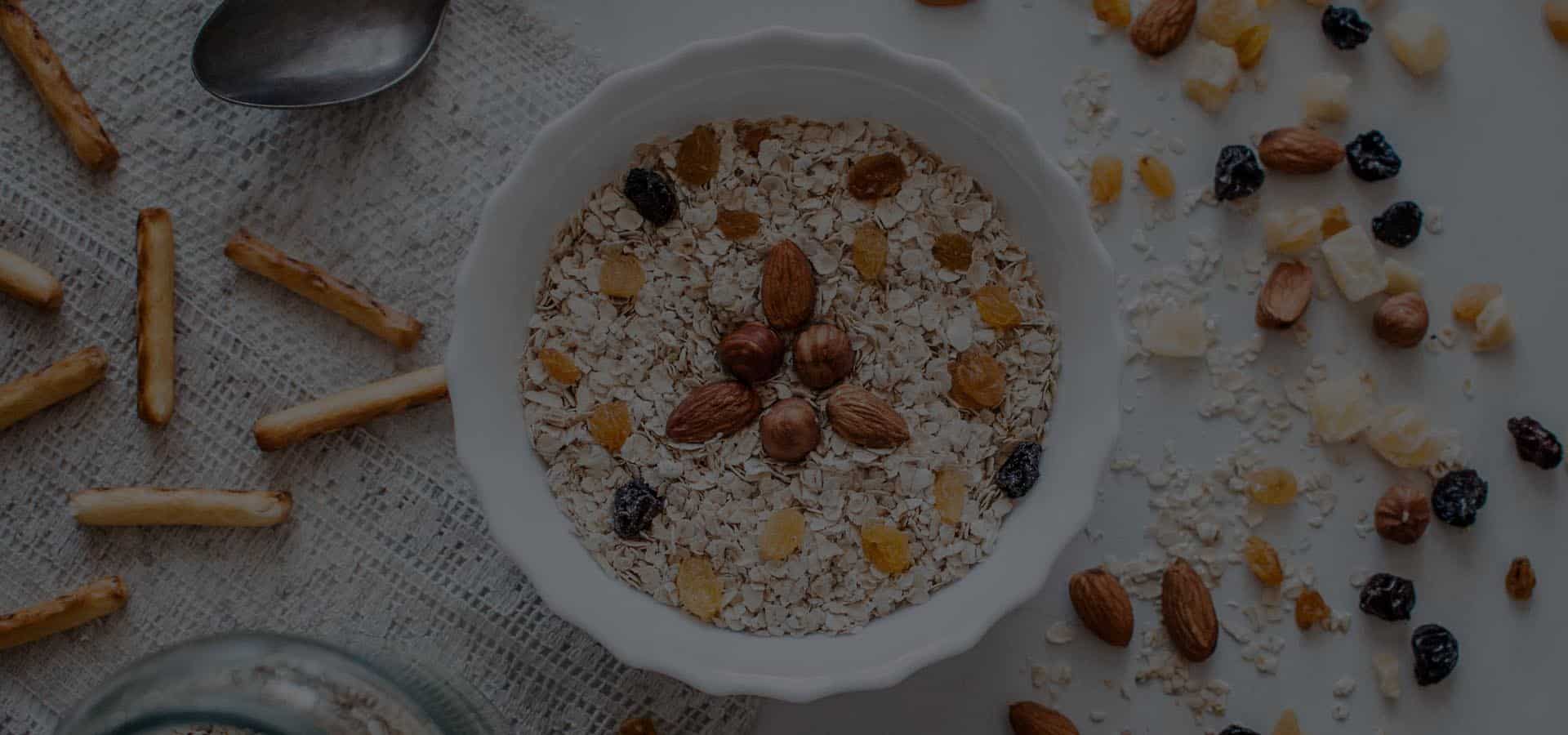
7 Nutrients of Concern on a Vegan Diet
September 5, 2019
Vegetable Frittata Muffins
April 21, 2020Fibre is a highly underrated nutrient. There is a wealth of evidence supporting the tremendous health benefits of eating more fibre, including the prevention of many chronic diseases. Unfortunately, many people fall short of consuming enough of this important nutrient.
F irst, what is fibre? Fibre is a type of carbohydrate found in plants. Similar to how humans have bones, plants have fibre to keep themselves strong and upright. In our food supply, we have dietary fibre and functional fibre. Dietary fibres are found naturally in food, whereas functional fibres are extracted from their natural food sources or manufactured to be added to foods or taken as a supplement for a particular health benefit.
There are three main ways to classify the different types of fibre: solubility, viscosity, and fermentability. Most plant-based foods contain a mix of fibre types. The most common way to classify fibre is based on its solubility, as either soluble or insoluble. Soluble fibre dissolves in water and often becomes viscous. Think of overnight oats or chia seed pudding, when you soak the oats or chia seeds in water they thicken and become gel-like by morning. This helps to slow down our digestion and feel fuller for longer.

Common dietary food sources of soluble fibre include oats, chia seeds, beans, lentils, barley, figs, and apricots.
Insoluble fibre does not dissolve in water; it helps increase the bulk of our stool and speed up the movement of food through our digestive system (thus improving regularity and preventing constipation!). Insoluble fibre is often found in the skins and seeds of fruit, vegetables, and the bran of whole grains. Keep in mind that most plant-based foods contain both insoluble and soluble fibres, for example avocados, sunflower seeds, broccoli, sweet potatoes, Brussels sprouts, carrots, pears and more. A common functional fibre is psyllium, commonly taken as Metamucil®, which is comprised of both soluble and insoluble fibre.
Unlike other components of food, like starches, proteins and fats, fibre isn’t broken down and instead passes through our body relatively intact. You may wonder, what good is it to us if we can’t digest and absorb it? Aside from the benefits discussed above, the bacteria in your gut LOVE fibre! You have tens of trillions of living microorganisms in your gut, mainly in your large intestine or colon. We call the collective of all these organisms, including bacteria, fungi, viruses and protozoa, your gut microbiota.
As mentioned above, we can also classify fibre by its fermentability. When fibres are fermentable, they can be metabolized and fermented by your gut bacteria. During this fermentation process, many awesome by-products and energy are produced which helps to keep your intestinal tract and ecosystem of microorganisms healthy. These fibres are called prebiotic fibres, as they act as food for your gut bacteria. Research is showing that our gut microbiota plays a role in our mood, cravings, immune system, inflammation, and even our body composition. Up to 60% of the weight from our bowel movements is made up of bacteria from our gut, not food! So, it’s important to keep these microbes happy and healthy.


It is well-established that high fibre dietary patterns can reduce our risk of heart disease, stroke, high blood pressure, type 2 diabetes, and many types of cancer, especially colon cancer. The association between fibre and colon cancer may be due to dietary fibre acting like a broom “sweeping away” harmful carcinogenic substances in our colon. In people with diabetes, soluble fibre can help improve glycemic control by slowing the absorption of sugar into our blood. Soluble fibre may also help lower cholesterol levels by binding to cholesterol in the intestine and preventing it from being reabsorbed, therefore decreasing the amount of cholesterol in our blood. It should be noted that cooking or blending your food does not reduce the amount of fibre, but it can make the fibres easier to digest and tolerated in some cases.
So just how much fibre do we need daily? See below for more specific recommendations based on age and sex. Keep in mind that this is just a minimum.
| Age 50 or younger | Age 51+ | |
|---|---|---|
| Men | 38 grams | 30 grams |
| Women | 25 grams | 21 grams |

You may be surprised to learn that only 5% of North Americans actually meet their fibre target! In Canada, the average intake is around 19 grams per day for men and just 15 grams for women, meaning that most of us should be eating almost twice the amount we normally do.
The good news is that it’s relatively easy to boost our intake. Remember that fibre is only found in plant-based foods, so try to incorporate a variety of plant-based foods at every meal when possible, such as whole grains, vegetables and fruit (with the skins!), nuts, seeds, beans, lentils, and peas. Try to reduce your consumption of ultra-processed foods and choose whole grains instead of refined grains when possible. When grains are refined, the outer coating otherwise known as the bran, is removed, ultimately lowering its fibre content.
Here are some simple ways you can increase your fibre intake:
- Add flax or chia seeds to your morning hot or cold cereal
- Have a piece of fruit for a mid-morning snack
- Switch your grain products to more whole grain options, ex. brown rice, whole grain bread, whole grain tortilla, steel cut oatmeal, whole wheat pasta
- Add beans or lentils to your taco night or favourite soup
- Add a layer of vegetables to your lasagna, ex. mushrooms, zucchini, carrots
- Have raw vegetables with dip on the side of your sandwich or wrap at lunch
- Try doing a Meatless Monday dinner once per week, like a chickpea coconut curry
- For an afternoon snack, consider a handful of nuts and a piece of fruit, or whole grain crackers with cheese


Remember to drink plenty of fluids throughout the day. Fibre works best when it absorbs liquids, making your stool softer and easy to pass. Increasing your fibre intake without proper hydration can worsen gastrointestinal symptoms. If you notice slightly more gas and bloating while increasing your fibre intake, this is totally normal. Gas is a byproduct of fermentation from your gut bacteria consuming the fibre. Slowly increasing your intake over a few weeks will allow your gut bacteria to gradually adjust to the change and should help to ease the symptoms.
If you’re experiencing pain, uncomfortable cramping, or unwanted changes in your bowel movements, this may indicate that something else is going on and you should consider seeing your medical doctor or working with a registered dietitian for a more personalized approach.
Written by Hannah Vogel and Liz Powell, RD
References:
- Food Insight. (2019, July 10). Fiber Fact Sheet. Retrieved from https://foodinsight.org/fiber-fact-sheet/?fbclid=IwAR2Pd5iFvcpTMoTNoJJSpESdhT08lqzR11Vo76JLTm8-0HOBGbrrKb1Ix_k.
- Institute of Medicine. 2005. Dietary Reference Intakes for Energy, Carbohydrate, Fiber, Fat, Fatty Acids, Cholesterol, Protein, and Amino Acids. Washington, DC: The National Academies Press. https://doi.org/10.17226/10490.
- Rimm, E. B., et al. (1996, February 14). Vegetable, fruit, and cereal fiber intake and risk of coronary heart disease among men. Retrieved October 2019, from https://www.ncbi.nlm.nih.gov/pubmed/8627965.
- Dong, J.-Y., et al. (2011, September). Dietary fiber intake and risk of breast cancer: a meta-analysis of prospective cohort studies. Retrieved October 2019, from https://www.ncbi.nlm.nih.gov/pubmed/21775566.
- Fung, T. T., et al. (2002, September). Whole-grain intake and the risk of type 2 diabetes: a prospective study in men. Retrieved October 2019, from https://www.ncbi.nlm.nih.gov/pubmed/12197996.
- King, D. E., et al. (2012, May). Trends in dietary fiber intake in the United States, 1999-2008. Retrieved October 2019, from https://www.ncbi.nlm.nih.gov/pubmed/22709768.
- Higdon, J. (2004, September 9). Fiber by Linus Pauling Institute. Retrieved October 2019, from https://lpi.oregonstate.edu/mic/other-nutrients/fiber.





